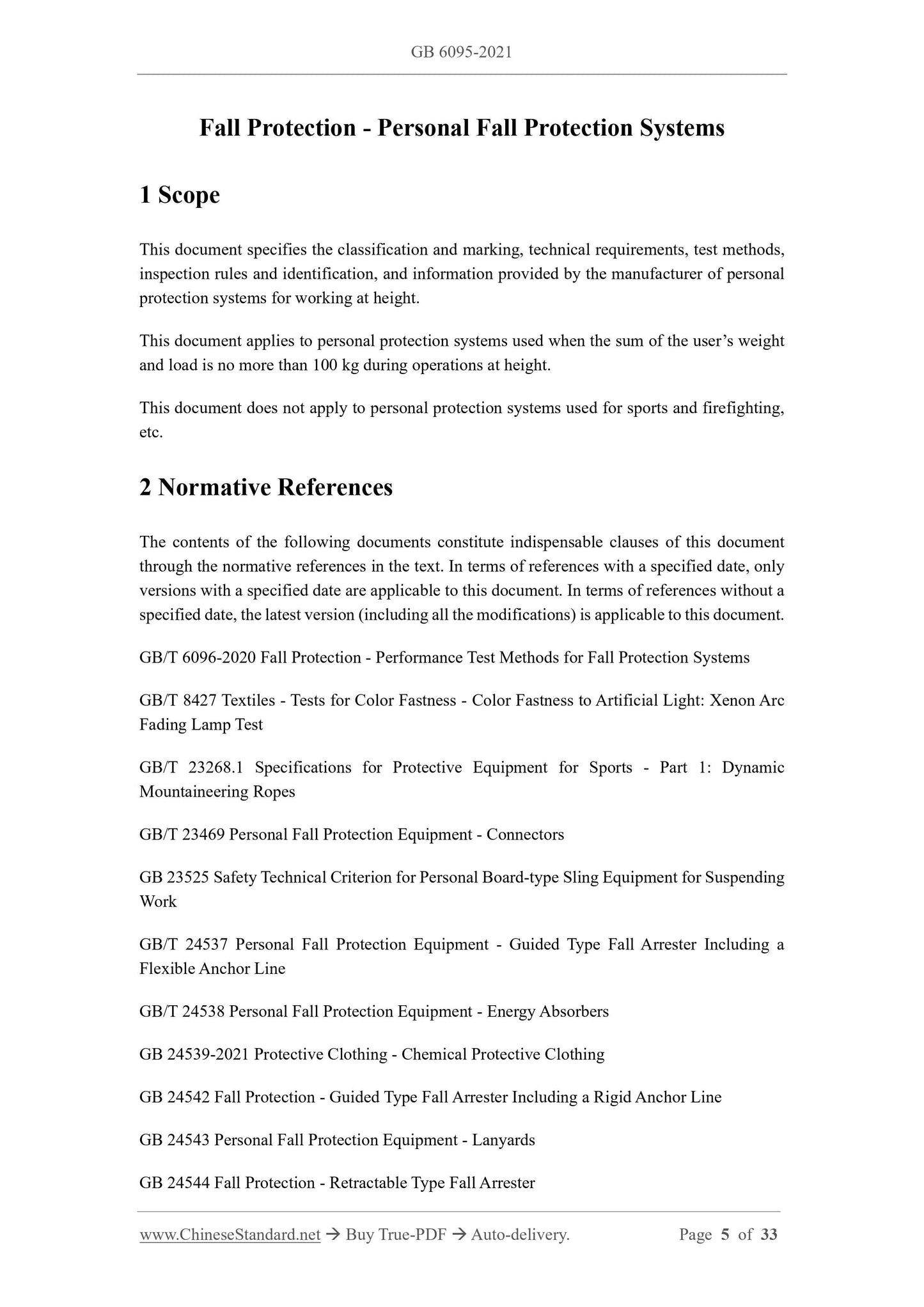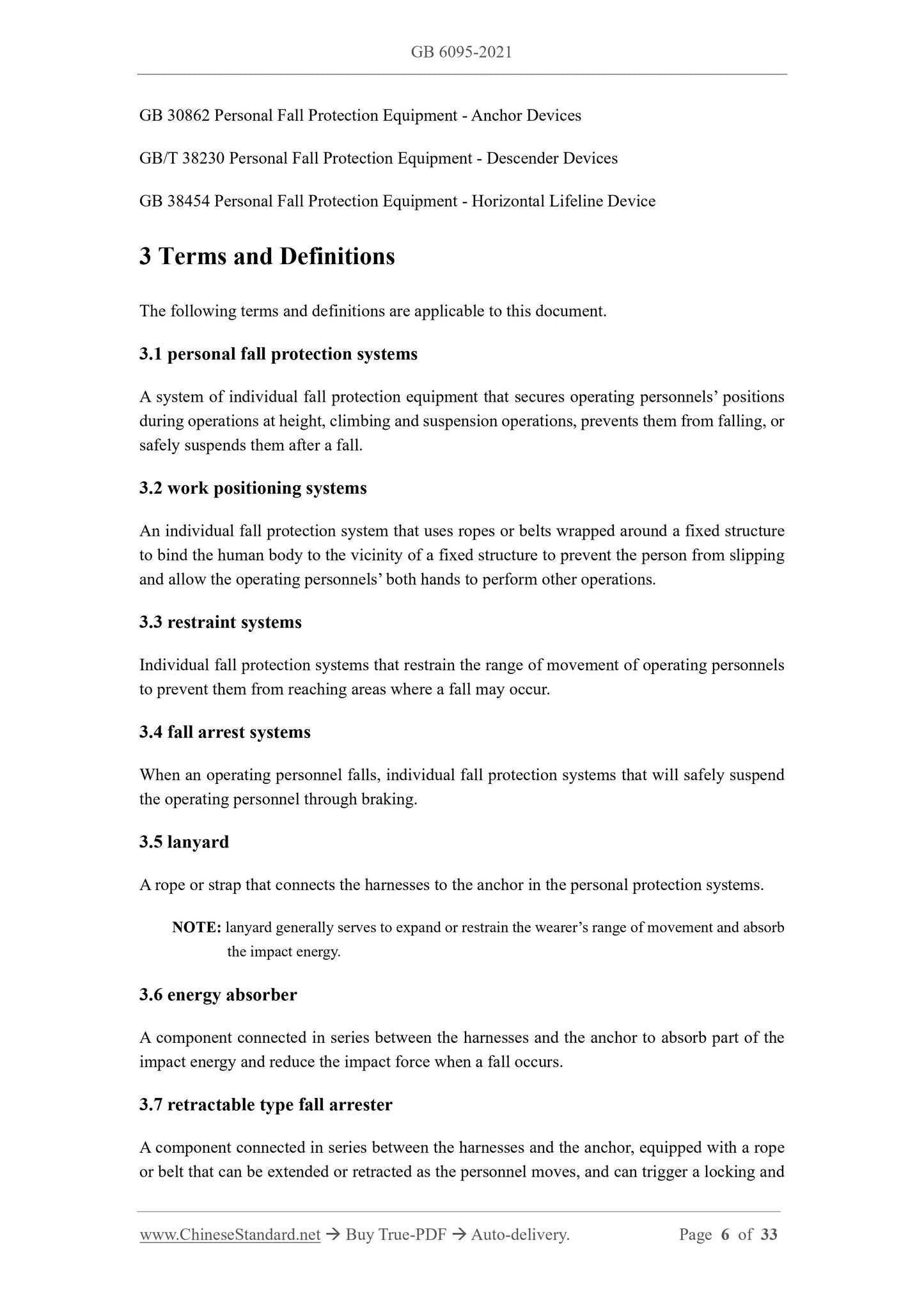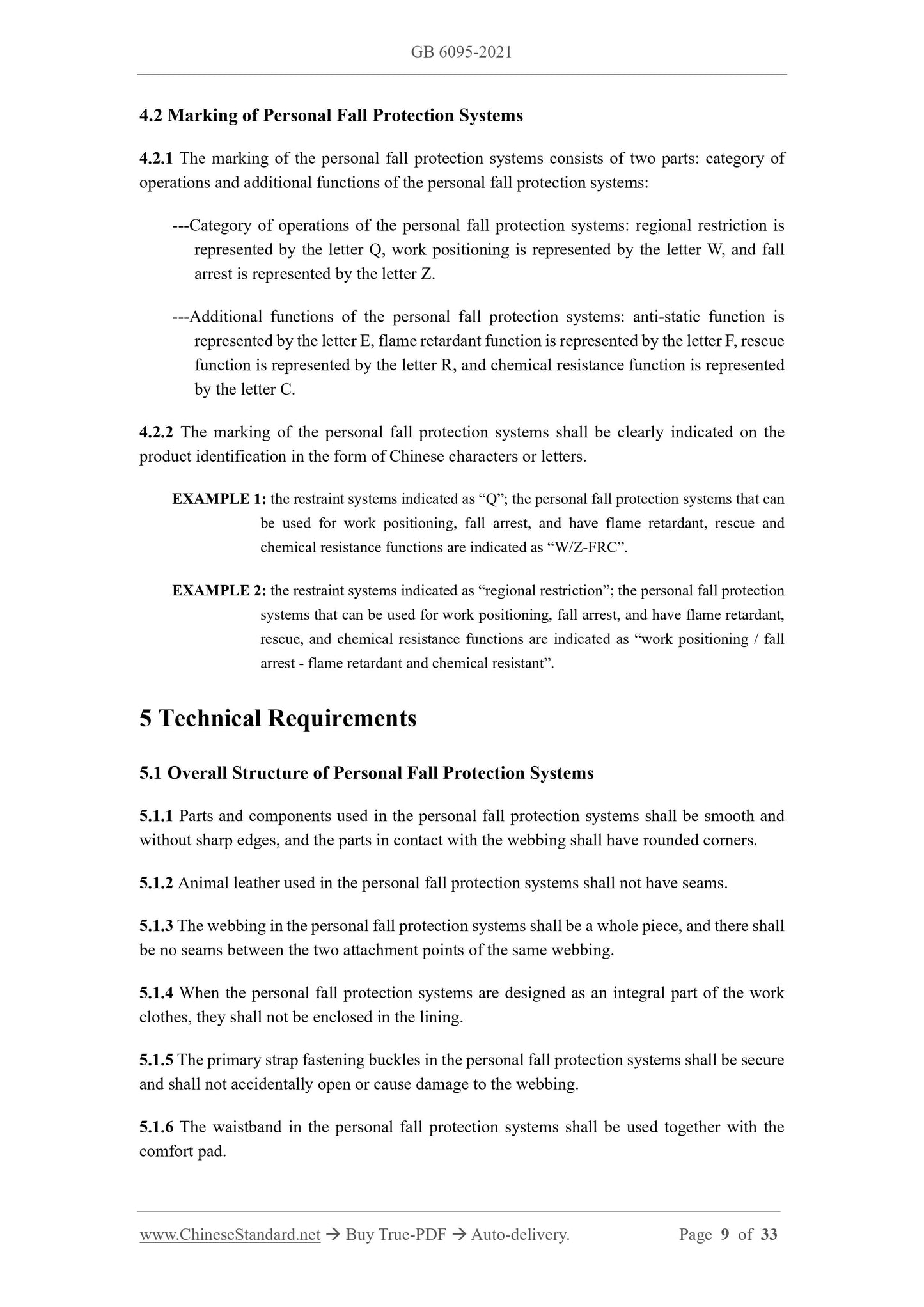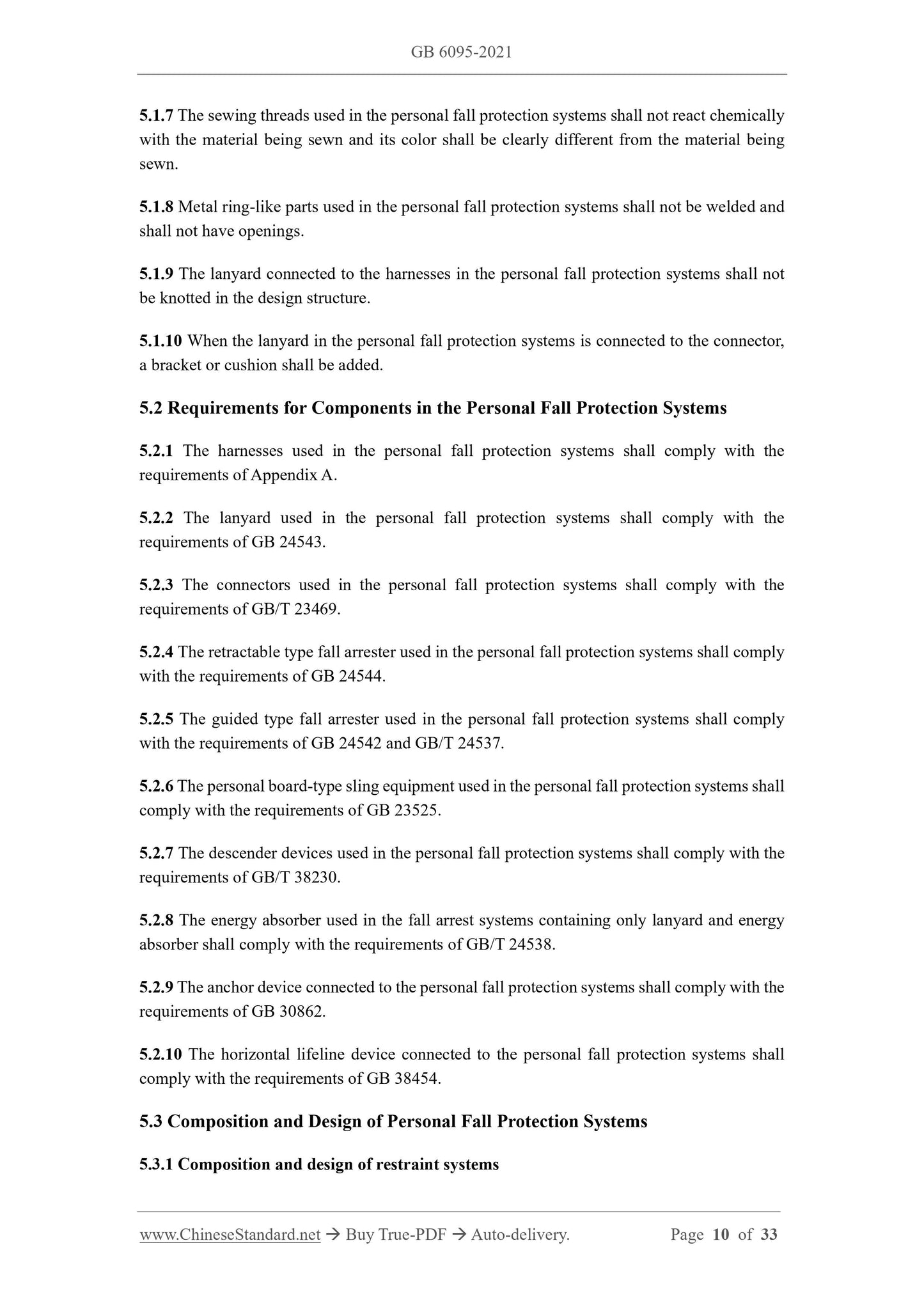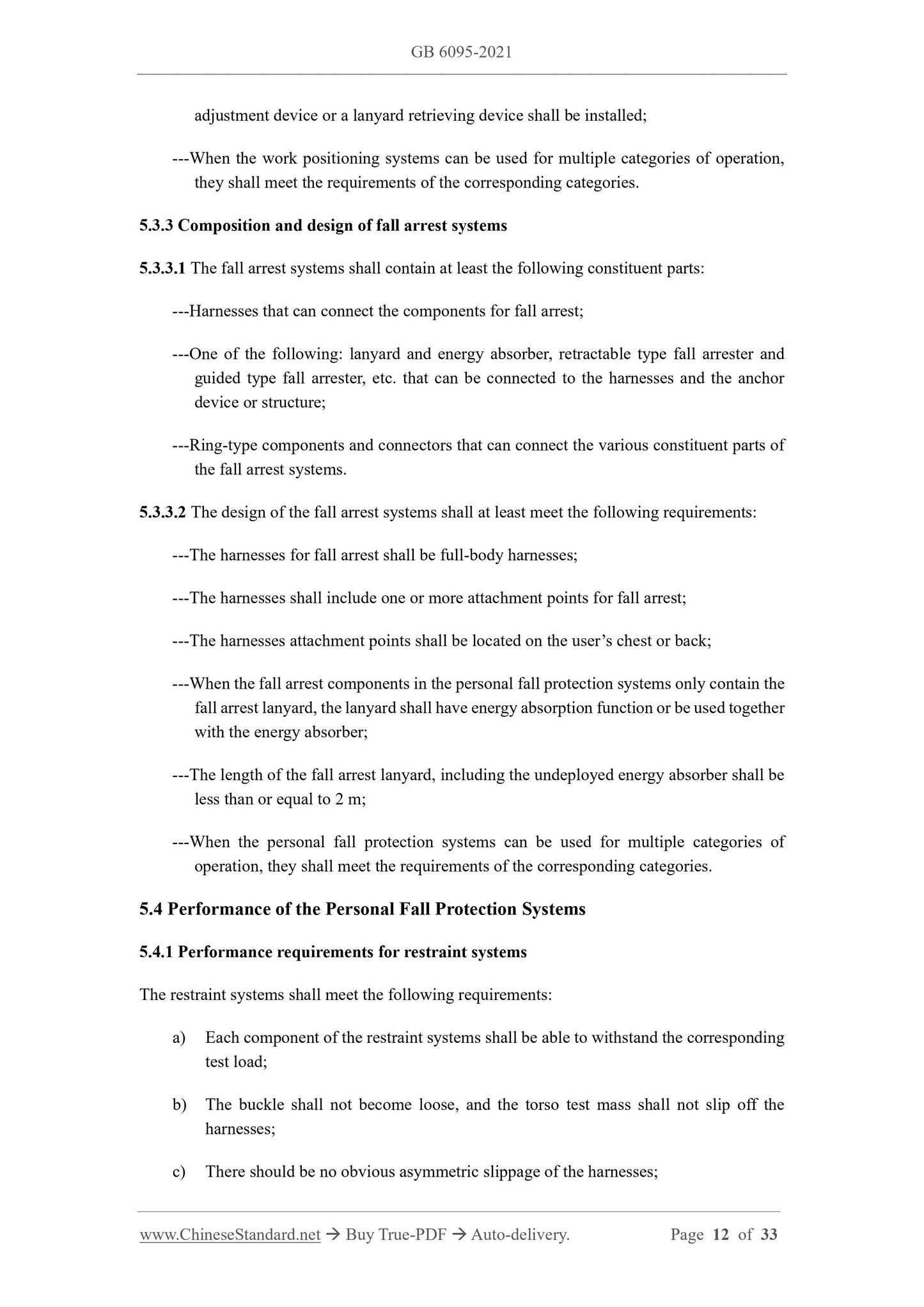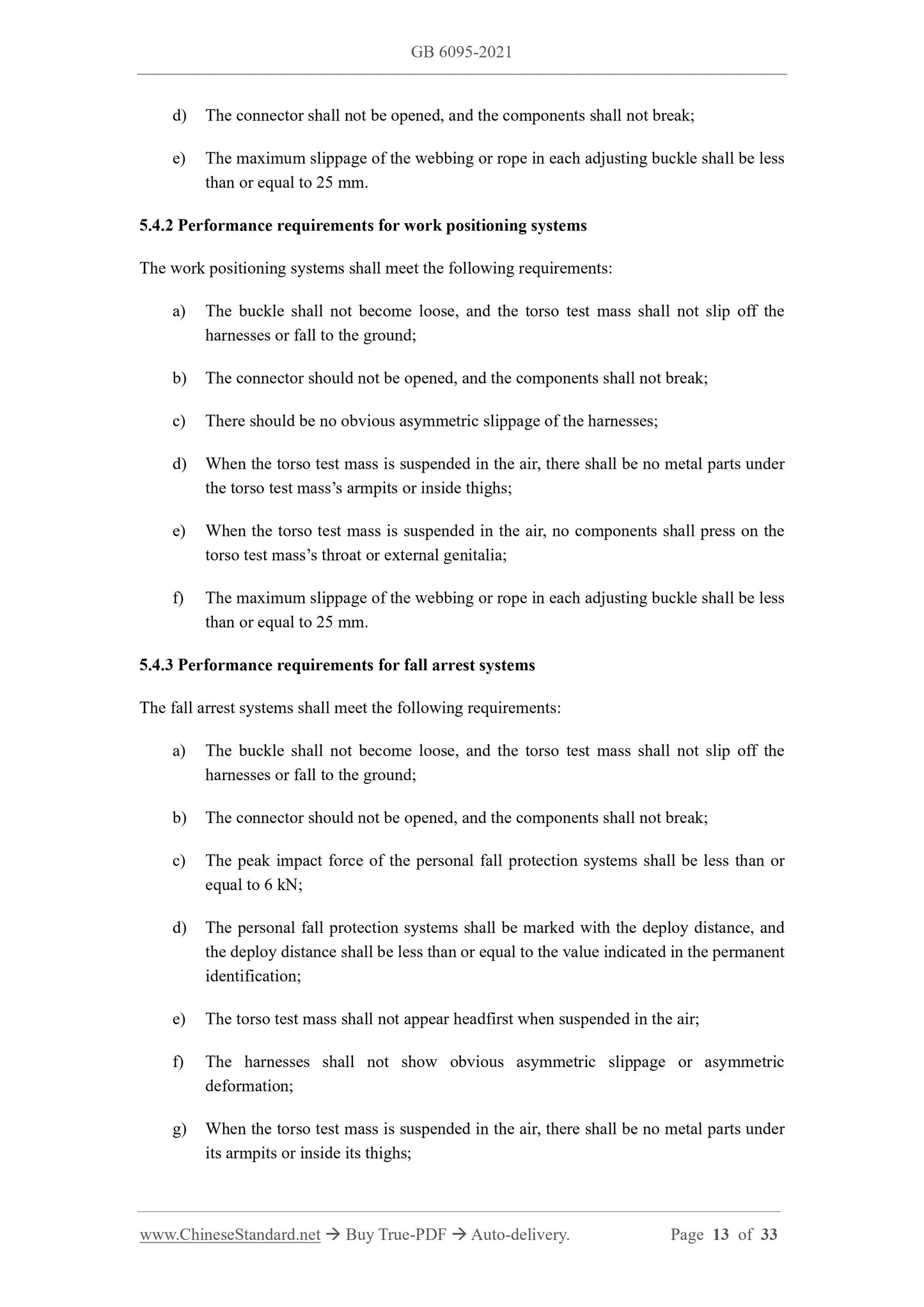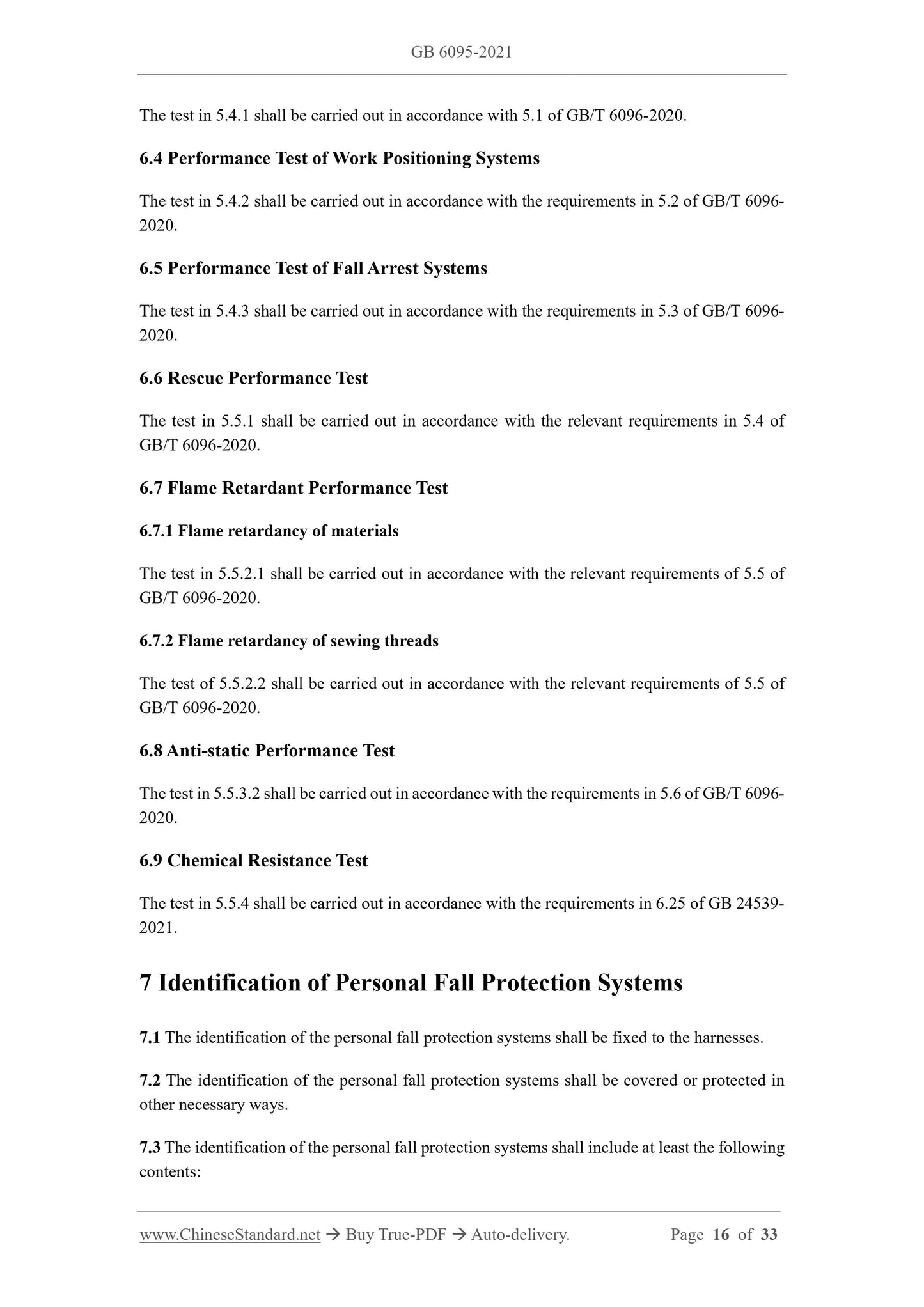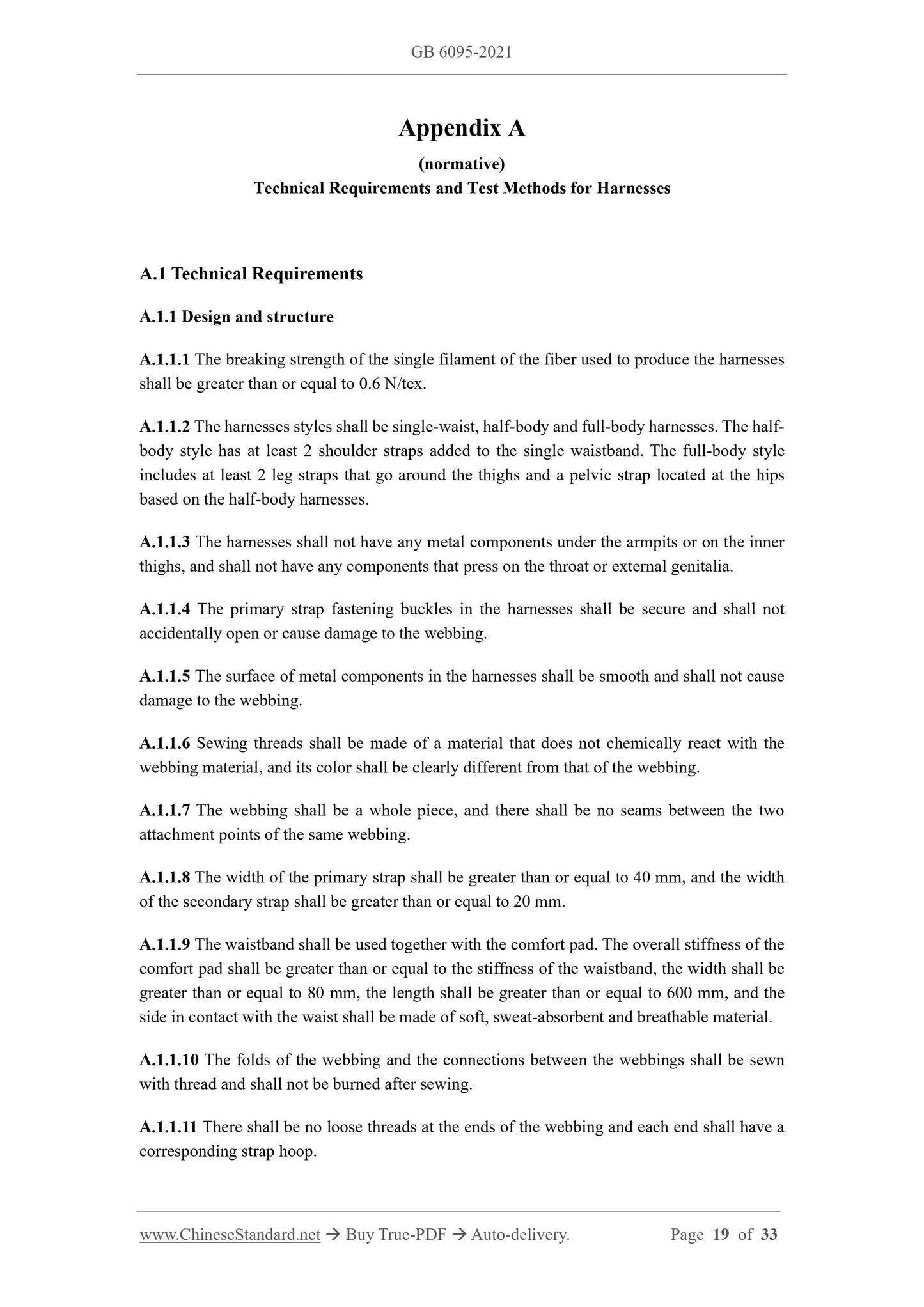1
/
of
12
www.ChineseStandard.us -- Field Test Asia Pte. Ltd.
GB 6095-2021 English PDF
GB 6095-2021 English PDF
Regular price
$320.00
Regular price
Sale price
$320.00
Unit price
/
per
Shipping calculated at checkout.
Couldn't load pickup availability
GB 6095-2021: Fall protection - Personal fall protection systems
Delivery: 9 seconds. Download (and Email) true-PDF + Invoice.Get Quotation: Click GB 6095-2021 (Self-service in 1-minute)
Newer / historical versions: GB 6095-2021
Preview True-PDF
Scope
This document specifies the classification and marking, technical requirements, test methods,inspection rules and identification, and information provided by the manufacturer of personal
protection systems for working at height.
This document applies to personal protection systems used when the sum of the user’s weight
and load is no more than 100 kg during operations at height.
This document does not apply to personal protection systems used for sports and firefighting,
etc.
Basic Data
| Standard ID | GB 6095-2021 (GB6095-2021) |
| Description (Translated English) | Fall protection - Personal fall protection systems |
| Sector / Industry | National Standard |
| Classification of Chinese Standard | C73 |
| Word Count Estimation | 22,252 |
| Issuing agency(ies) | State Administration for Market Regulation, China National Standardization Administration |
Share


